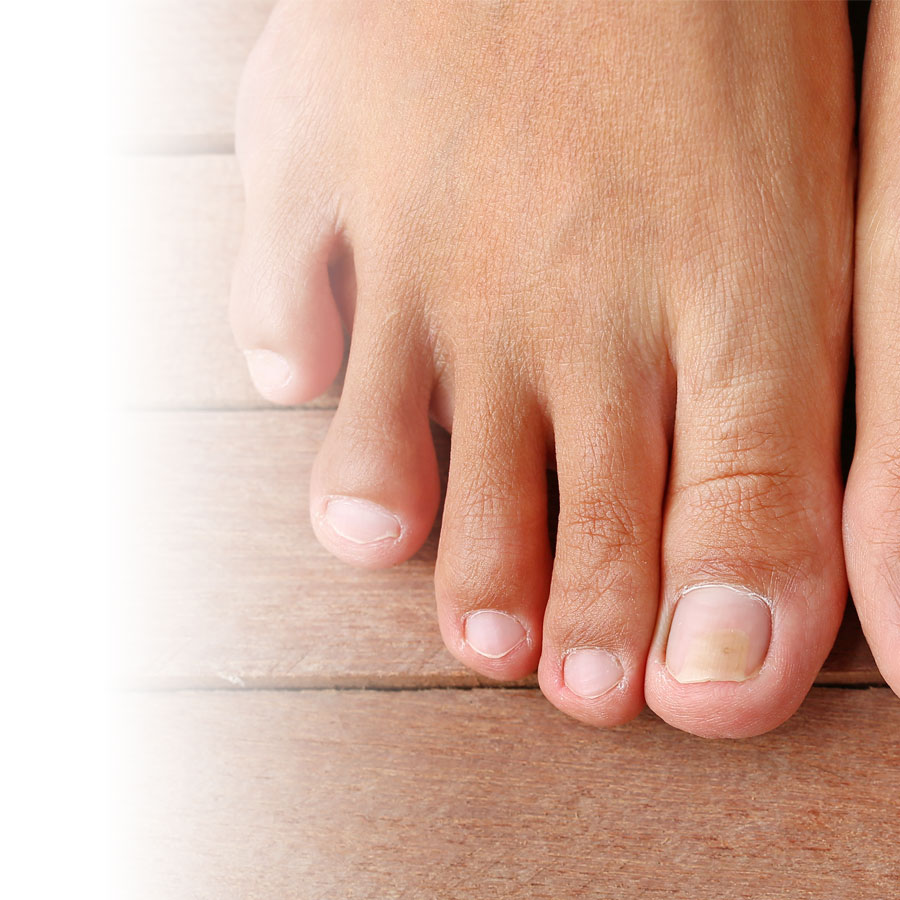A fungal nail infection is a common condition whose consequences are often underestimated. Learn how to detect it so that it can be treated quickly.
WHAT PURPOSE DO OUR NAILS SERVE?
A nail is a scaly structure derived from the epidermis that forms a protective layer that is clearly visible at the tip of a finger or toe. Nails are made of hard keratin, while the epidermis contains soft keratin. Each nail has a free edge (the part that can be cut), a plate (the visible attached part) and a root (buried under the skin).
Nails are practical for a multitude of tasks and activities: picking up a small object, scratching an itch, dislodging food stuck on the dishes, etc. For women, it's a great way to add color and express femininity and creativity. To keep them beautiful, strong and healthy, they must be well taken care of!
WHAT IS A FUNGAL NAIL INFECTION?
The word "fungal" means "of or relating to fungi". Another term used to describe it is “ringworm”. Of course, the term “fungus” refers to microscopic and invisible fungi, not the ones that can be picked up during a nature walk. When a nail is affected by a fungal infection, it is called "onychomycosis" or "mycosis".
This is a very common infection. It is estimated that this one alone accounts for one-third of all fungal skin infections. Many people are unknowingly affected by it. Because it is highly contagious, the risk of transmission to others is high.
WHAT CAUSES ONYCHOMYCOSIS?
Fungal infections occur as a result of contact with a fungus-contaminated surface or object, such as the floor of a shower or a shoe, for example.
Some people are at greater risk of being affected by it, including those who:
- are elderly (up to 50% of people over the age of 70 can be affected by it)
- are in contact with an infected individual (e.g., family member or someone at a swimming pool or public bath)
- are living with circulatory disease or diabetes
- have a pre-existing nail deformity (e.g. in the case of psoriasis)
- have athlete's foot
- have a weakened immune system
- etc.
Interesting fact: men are affected more often than women. Toenails are infected 10 times more often than fingernails.
HOW CAN ONYCHOMYCOSIS BE RECOGNIZED?
Fungal nail infection affects the nail plate and/or nail bed. The big toe is often affected first, and then the infection sometimes spreads to other nails on the same foot. The nail is typically deformed or has an abnormal colour (whitish, yellowish or brownish). The following signs and symptoms regarding the nail should also be watched for:
- thickening
- fragility
- flaking, and
- discomfort or pain
As the infection worsens, these manifestations become more pronounced. It is advisable to obtain a diagnosis quickly so that treatment can be initiated promptly, if needed. Without proper treatment, the infection can spread to other toes and the surrounding skin.
A doctor will often make the diagnosis based on the observation of signs and symptoms. However, there are tests that can confirm the diagnosis.
HOW CAN ONYCHOMYCOSIS BE TREATED?
Fortunately, there are effective treatments against fungal nail infections that can be taken by mouth or applied to the nail. Some must be prescribed and others are available without a prescription. These treatments last several weeks and must be taken to completion in order to eliminate the infection.
Regardless of the treatment used, it is important to follow the dosage to obtain the desired results. Because the risk of recurrence is high, consistency and perseverance are essential. Your pharmacist can help you choose a treatment and provide you with information on its optimal and safe use.
Additionally, the following measures can help ensure the success of the treatment:
- keep your nails cut short
- dry your feet well after washing them by patting them dry with a towel
- wear clean, absorbent socks
- avoid moisture or wet feet
- avoid wearing old shoes
These measures also help prevent infection in an unaffected person. A word of advice for everyone: when you go to public places, especially with moist environments (swimming pools, showers or public baths), wear shoes or sandals.
Other medical treatments may sometimes be considered, such as a procedure to remove the nail.
Don’t hesitate to consult your pharmacist for additional information about fungal nail infection and its treatments.

